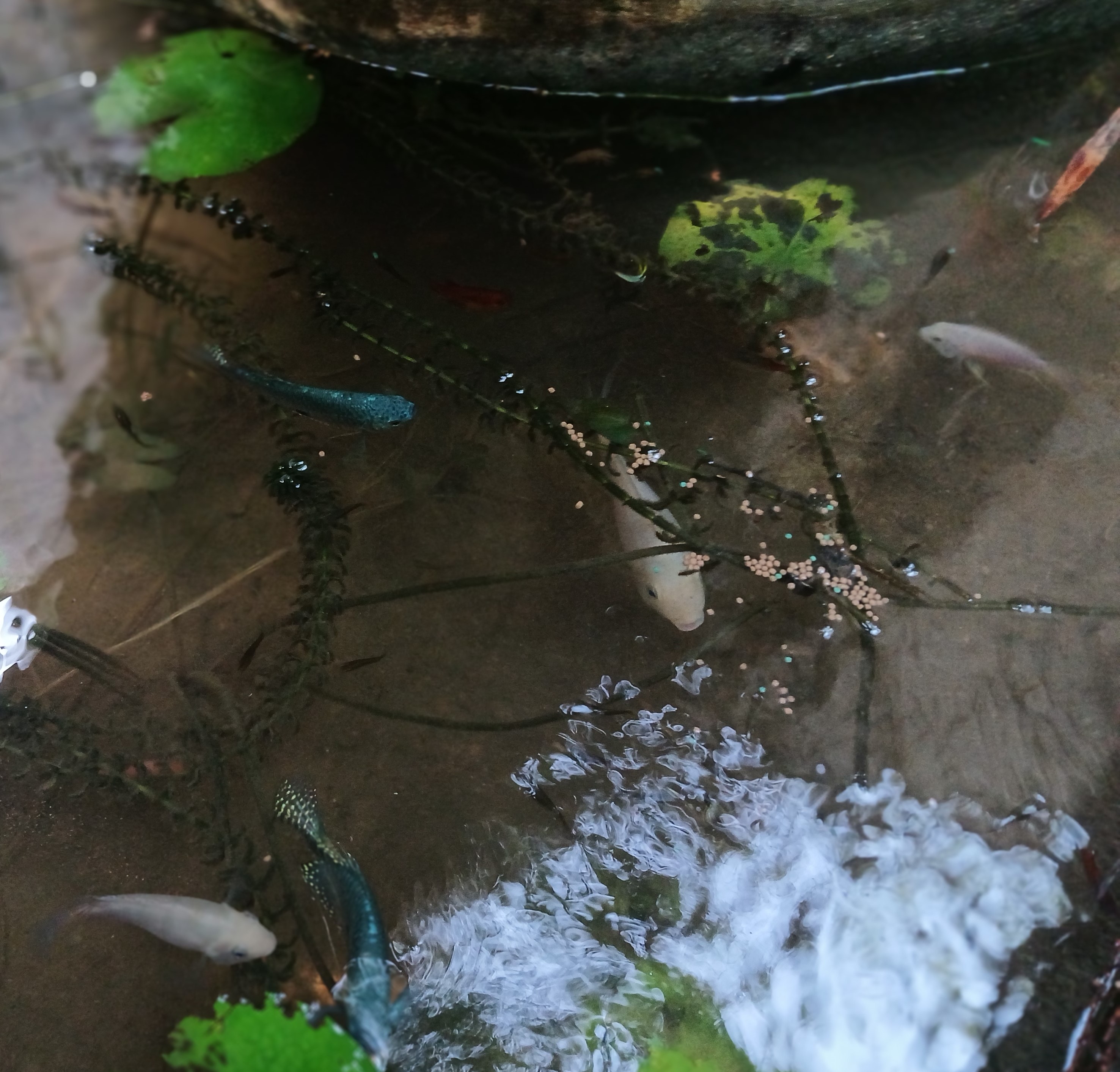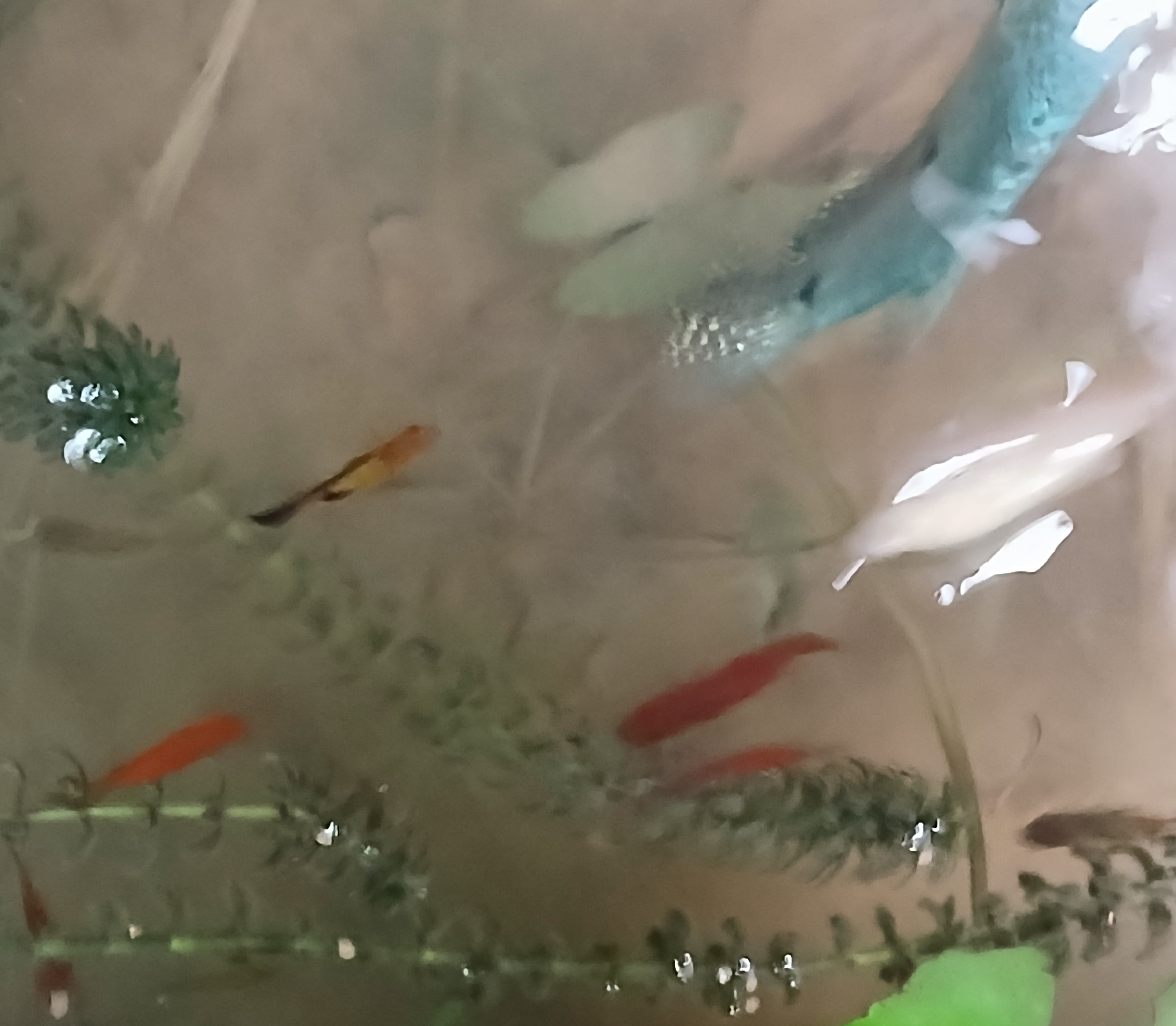The pond around the temple flower tree, against the south wall of the garden, abutting on the tortoise enclosure, is also full of white Malavi, many of them born here so they are of varying sizes. Amongst them is one pink tetra, though I do hope there may be at least one other, of the three that were originally there.
The pond is full of platies and guppies, which have been there from the start, and keep multiplying. There were also several grey gourami there, but I have described previously how they all died away. However the three I put there a few months ago have all survived, though I must confess I count them anxiously every morning, as I count the red tetra in the ehala tree pond.
The first picture here shows three Malavi and two gourami, one of them disappearing downward into the bright patch of light on the water. Then there is the pink tetra, with a Malavi by him, and one gourami and one Malavi above. Both those pictures also have plenty of dark guppies, but the third shows some platies, along with a Malavi and a gourami dramatically streaked with sunlight.
On the other side of the little wall is the pink bath tub from the upstairs bathroom at Lakmahal where Kavi has had his big gourami for the last eight or more years. It grew bad tempered and he was told to find a companion, and as I have mentioned his uncle gave me a pair of large black fish which have survived companionably for well over a year now. That tub gets dirty soon, but when it is clear it is a pleasure to see the enormous gourami with the black ones. One is wary and rarely darts out to the space the gourami occupies, but the other is bolder and crosses the tub.
The fourth picture shows the gourami in the biggest space between the cross bars that keep the netting down, for he can jump powerfully. And in the cornermost space, which is near my seat on the other side of the wall, you can see the smaller of the black fish who has crossed over to feed on this side.
And finally I show a pond I never have before, for it is the pool built for Henry the lame tortoise. But it needed little fish to stop mosquitoes breeding, and I enjoy seeing the little ones, notably two delightful sari guppies, feeding of a morning. And recently I caught a group of them in the sunlight that had hit the back end of the tank as the sun rose.



























































